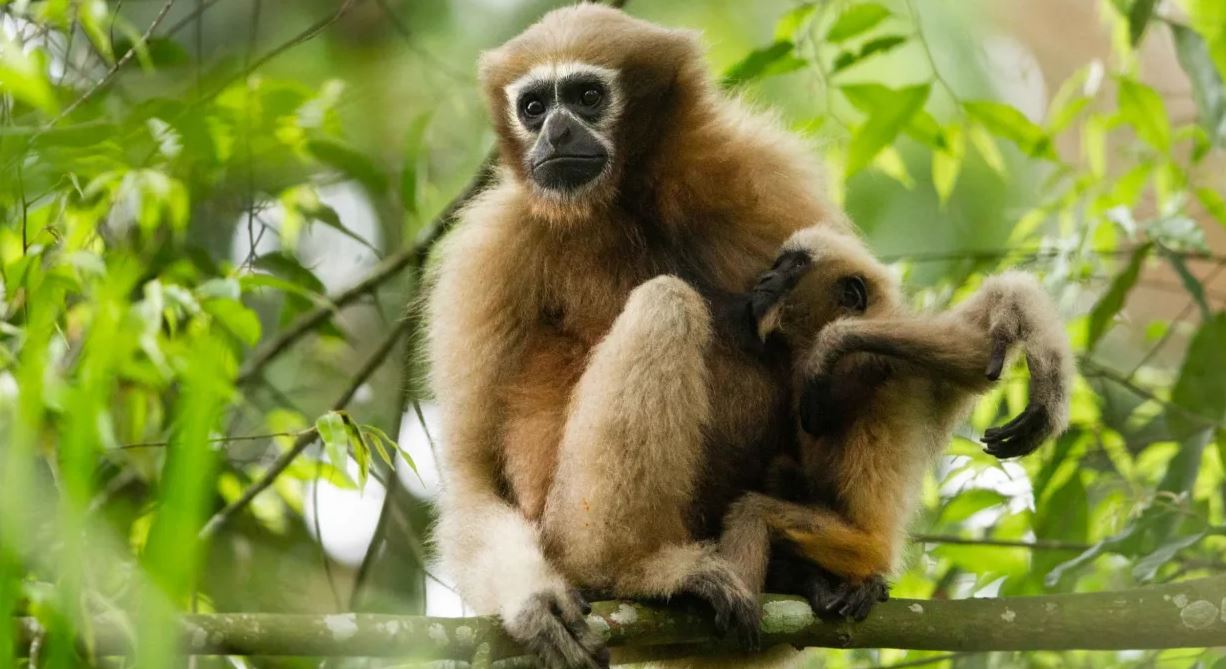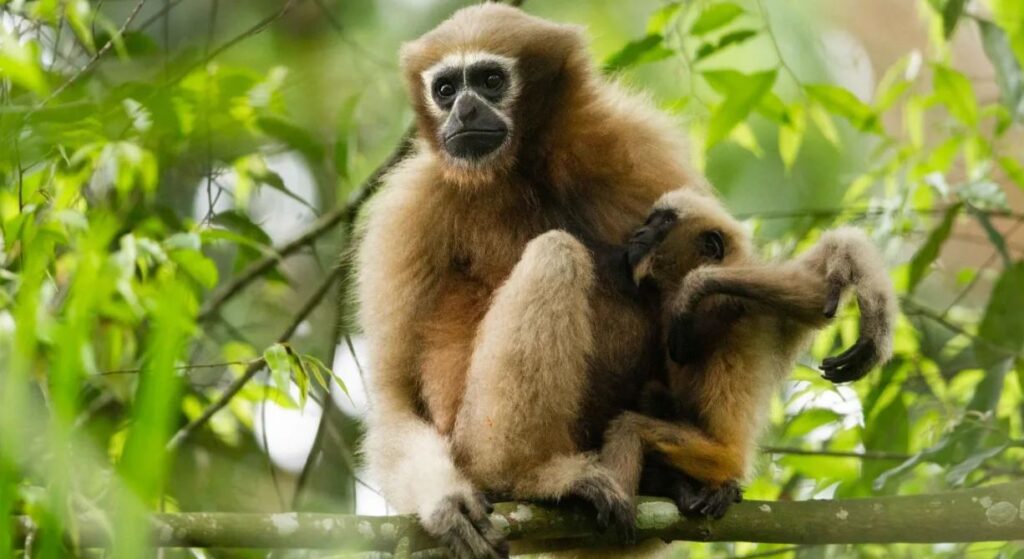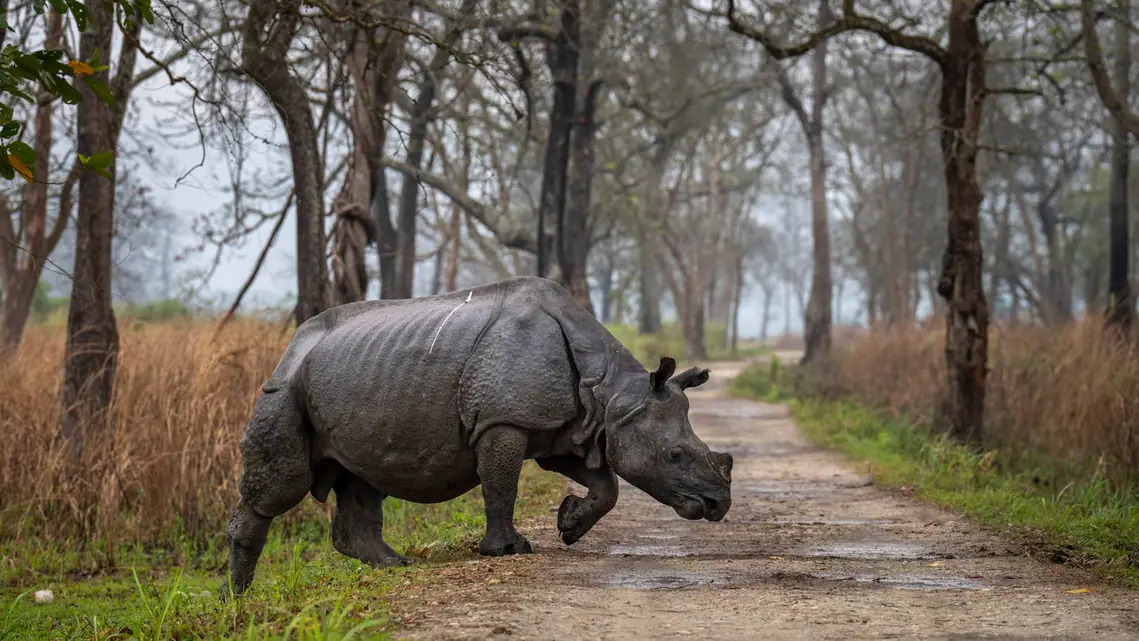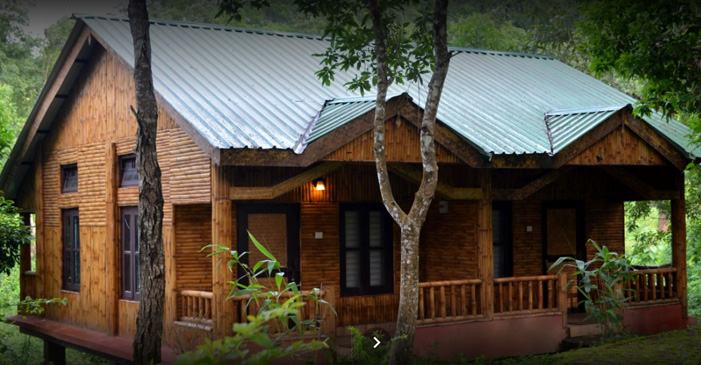
Hollongapar Gibbon Sanctuary: A Hidden Gem in the Heart of Kaziranga
Hollongapar Gibbon Sanctuary is a hidden treasure waiting to be explored by nature enthusiasts and wildlife lovers. Located in close proximity to the world-famous Kaziranga National Park, this sanctuary offers a unique and captivating experience, showcasing the rich biodiversity of the region. Spread over an area of 20.98 square kilometers, it is renowned for its prime inhabitants, the hoolock gibbons, and a myriad of other fascinating flora and fauna.

A Glimpse of the Hoolock Gibbon
The Hollongapar Gibbon Sanctuary is primarily known for its hoolock gibbons. This sanctuary is home to the only population of the Western Hoolock Gibbon in India, making it an essential conservation site for this endangered species. With their distinctive white eyebrows and expressive faces, these gibbons are a captivating sight as they swing gracefully through the canopy.
Visitors are in for a treat as they watch these primates in their natural habitat. Early mornings are the best time to witness these gibbons in action, as they perform their impressive acrobatics while moving through the dense forest. Their melodious songs echo through the sanctuary, creating an enchanting ambiance.
The Sanctuary’s Unique Flora and Fauna
The biodiversity of the Hollongapar Gibbon Sanctuary extends beyond the hoolock gibbons. The region is a mosaic of evergreen and semi-evergreen forests, which provide habitat to various other species. Birdwatchers will find delight in the sanctuary’s avian population, with species such as the white-winged wood duck, great pied hornbill, and red-vented bulbul making appearances.
The sanctuary also houses a diverse range of plant species, including several medicinal plants, orchids, and ferns. While exploring the trails, you’ll come across ancient trees with massive canopies, creating a serene and shaded atmosphere.
Exploring the Sanctuary
A network of well-maintained trails takes visitors through the sanctuary, making it accessible to tourists of all ages. The guided walks and treks organized by the forest department ensure that visitors have a safe and informative experience while exploring the sanctuary.
One of the most popular trails is the Hoolock Gibbon Trail, which provides an excellent opportunity to spot these fascinating primates. The Silbori Range, where the sanctuary is located, is easily accessible from the nearby town of Jorhat, which is just a few hours away. The sanctuary’s pristine surroundings and serene ambiance make it an ideal location for a leisurely day trip or a weekend getaway.
Conservation Efforts and Challenges
The Hollongapar Gibbon Sanctuary is a shining example of conservation efforts in India. It was initially established in 1881 to protect the hoolock gibbons and other wildlife in the area. Over the years, it has played a crucial role in conserving this endangered primate species and preserving its natural habitat.
However, the sanctuary faces various challenges, including encroachment, illegal logging, and poaching. Conservationists and the forest department are working diligently to safeguard this vital habitat and its inhabitants. Visitor awareness and support play a crucial role in ensuring the long-term survival of the sanctuary.
Conclusion
The Hollongapar Gibbon Sanctuary, with its remarkable biodiversity and commitment to preserving the hoolock gibbons, is a must-visit destination for wildlife enthusiasts and nature lovers. Its proximity to the renowned Kaziranga National Park makes it an excellent addition to a wildlife expedition in Assam. As you immerse yourself in the tranquil beauty of this sanctuary, you’ll not only witness the majesty of the hoolock gibbons but also contribute to the conservation efforts that are vital for their survival. A visit to Hollongapar is a journey into the heart of Assam’s wilderness, a place where nature thrives and serenity abounds.


